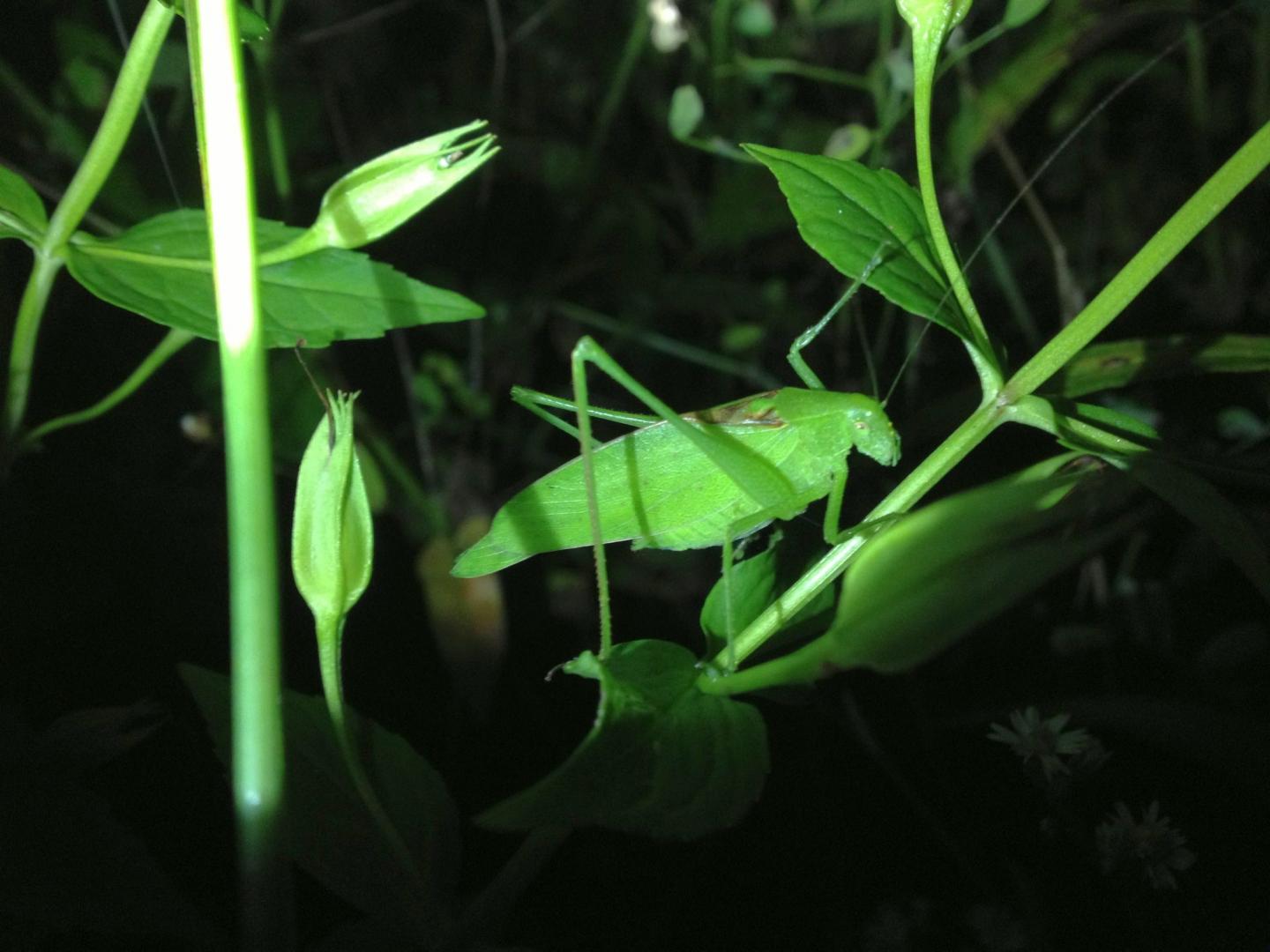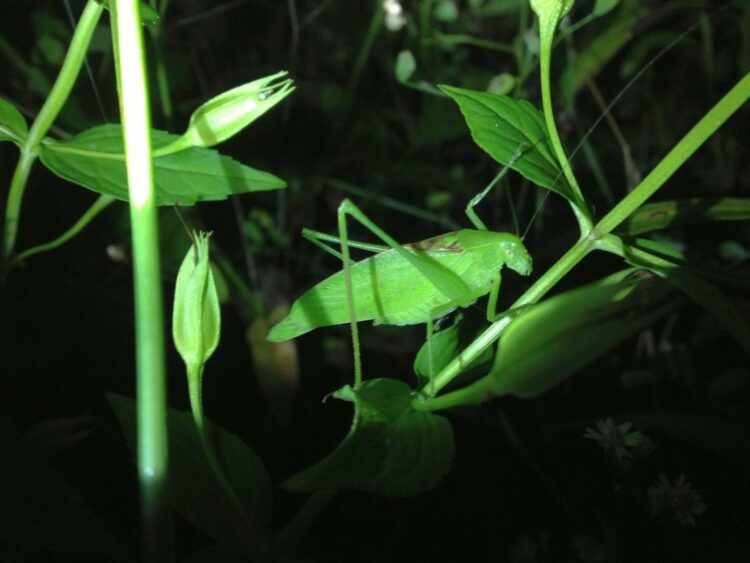
Credit: D.J. McNeil, Penn State
UNIVERSITY PARK, Pa. — The songs that crickets and katydids sing at night to attract mates can help in monitoring and mapping their populations, according to Penn State researchers, whose study of Orthoptera species in central Pennsylvania also shed light on these insects’ habitat preferences.
“We were surprised to find more species in suburban areas than in either urban or rural areas,” said the study’s lead researcher, D.J. McNeil, postdoctoral fellow in Penn State’s Insect Biodiversity Center and the Department of Entomology.
The study was the first to show that the use of aural point count surveys — a method commonly used by wildlife biologists to study birds and other vertebrates by listening to their songs — can be effective in exploring the population dynamics of night-singing insect species, the researchers said.
“Insect populations are showing declines globally, and several studies have indicated that Orthopterans, such as grasshoppers, crickets and katydids, are among the most threatened insect groups,” said study co-author Christina Grozinger, Publius Vergilius Maro Professor of Entomology, Penn State College of Agricultural Sciences. “Having a nondestructive way to monitor and map these species is vital for understanding how to conserve and expand their populations.”
McNeil explained that Orthoptera species — such as those in suborder Ensifera, which consists of crickets and katydids — are known to be highly sensitive to variation in habitat conditions. Since they feed on plants, these species also can be affected negatively when insecticides and herbicides are applied to vegetation.
McNeil noted that few efficient, standardized monitoring protocols exist for Ensifera, and many involve lethal trapping or time-intensive collection efforts such as mark-recapture. In addition, other collection methods such as sweep-netting are challenging in densely vegetated habitats, especially for katydid species, many of which live high in trees. The researchers pointed out that the conspicuous stridulations, or mating calls, produced by singing Ensifera make them excellent candidates for aural population surveys.
“Although researchers have used acoustic sampling methods for crickets and katydids in the past, these methods often require specialized audio gear and complex machine-learning algorithms to disentangle the insects’ calls from the background noise,” McNeil said. “This is very expensive, and it requires a very high-tech skill set. Developing a simple and efficient monitoring protocol can greatly improve our ability to study and understand Ensifera population ecology.”
To address this need, McNeil drew on his background in ornithology — his doctoral research focused on birds — to develop a protocol that required only a human being to conduct aural point count surveys.
“You can identify birds by their calls really easily, and I came to realize that this was true for crickets and katydids,” he said. “For example, one cricket species makes a particular type of chirp, and another one has a different pattern. So, over the course of a few years, I’ve taught myself the different breeding calls of the crickets and katydids, and I’ve reached the point where I can confidently identify a large portion of the species that we have in this region.”
The researchers defined the study area by selecting a central point in downtown State College, Pennsylvania, and plotting four transects extending 10 kilometers east, west, north and south. Along each transect, they selected 10 points, about 1 km apart, as survey locations. The resulting 41 roadside sampling points encompassed deciduous forest, row-crop agricultural fields, pastures, and varying degrees of urban and suburban cover types.
“That allowed us not only to get different habitat types, but to capture a smooth gradient across the entire spectrum of what a cricket might experience,” McNeil said.
McNeil conducted all of the surveys by standing stationary for three minutes at each location and using a checklist to record the number of Ensifera species detected. Because the study focused on crickets and katydids that sing mostly after dark, sampling was performed between sunset and midnight, and each location was sampled five times from July to November in 2019, a time of year that includes the seasonal singing periods for most local Ensifera. He then used occupancy modeling approaches to map the species distributions across the urban-to-rural gradient.
The findings, reported Sept. 29 in the Journal of Insect Conservation, provided the first quantitative glimpse into the habitat needs for a variety of night-singing Orthoptera in eastern North America, the researchers said. For example, some species preferred agriculturally dominated landscapes, some preferred urban habitats, and others were found across all areas surveyed.
“We found that intermediate levels of urbanization, such as what you’d find in suburban areas, hosted the highest number of species, perhaps because areas with intermediate levels of disturbance host the greatest number of habitat niches and can support more species than heavily disturbed or totally undisturbed ecosystems,” McNeil said.
“We hope that this study inspires people to listen carefully to the diverse insect songs in their backyards at night and think about ways to improve the habitat for these important species,” Grozinger said.
###
Tips on how to support insect biodiversity can be found on the Insect Biodiversity Center website.
Penn State funding for the Insect Biodiversity Center supported this work.
Media Contact
Chuck Gill
[email protected]
Original Source
https:/
Related Journal Article
http://dx.





